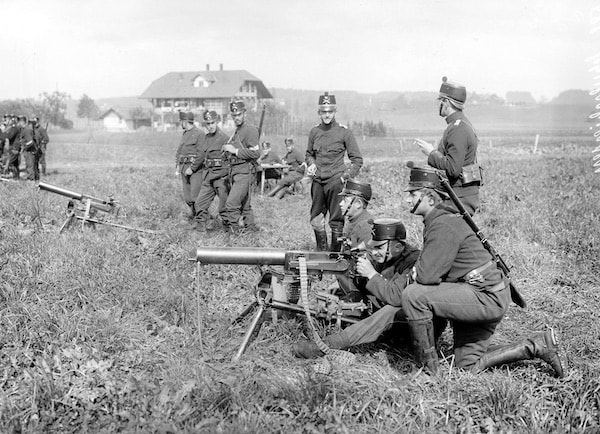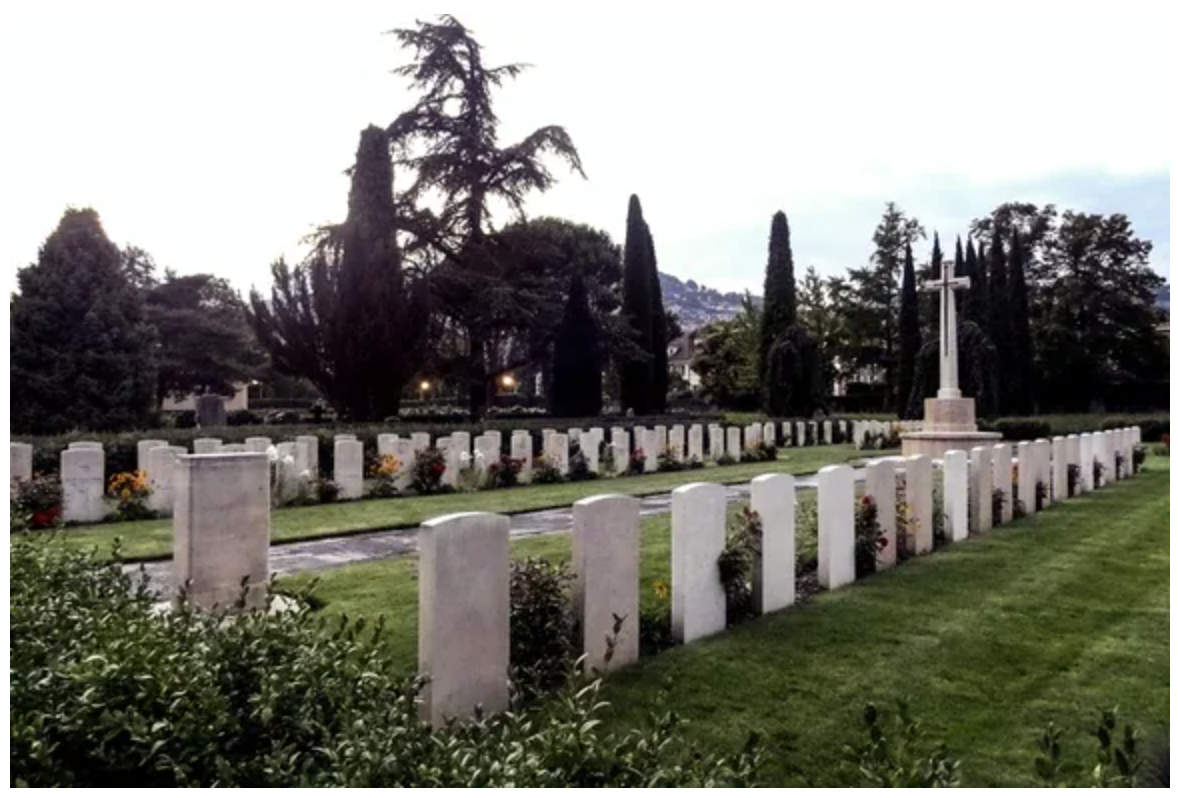Lesson 7 - Switzerland in World War 1
The Matu history syllabus requires us to pay special attention to the question on Swiss neutrality. We are expected to 'trace Switzerland's path from one world war to the next and to situate the debate on neutrality in the light of political positions and economic commitments. To understand the transition from social confrontation (general strike) to social peace (labour peace). '
For some, neutrality is the defining characteristic of Switzerland. As we studied, Switzerland has been officially neutral since the Congress of Vienna and the Treaty of Paris in 1815. Neutrality is also enshrined in the constitution of 1848. As a result, Switzerland has been the host of many international conferences to settle peace and has become the home of many international organisations – EFTA, Council of Europe, Red Cross (Henry Dunant) IMP, WTO, Fifa, Uefa, IOC etc.
The Matu history syllabus requires us to pay special attention to the question on Swiss neutrality. We are expected to 'trace Switzerland's path from one world war to the next and to situate the debate on neutrality in the light of political positions and economic commitments. To understand the transition from social confrontation (general strike) to social peace (labour peace). '
For some, neutrality is the defining characteristic of Switzerland. As we studied, Switzerland has been officially neutral since the Congress of Vienna and the Treaty of Paris in 1815. Neutrality is also enshrined in the constitution of 1848. As a result, Switzerland has been the host of many international conferences to settle peace and has become the home of many international organisations – EFTA, Council of Europe, Red Cross (Henry Dunant) IMP, WTO, Fifa, Uefa, IOC etc.
|
|
|
During World War I and World War II, Switzerland maintained armed neutrality. As we have seen previously, Switzerland's independence also suited the other nations as a centre for for diplomacy, banking and commerce, as well as being a safe haven for refugees.
World War I
World War I
With two of the Central Powers (Germany and Austria-Hungary) and two of the Entente Powers (France and Italy) all sharing borders and populations with Switzerland, neutrality proved difficult but essential. Just as the United States feared being divided by a war that set its European national groups against each other, so to Switzerland where French and German linguistic groups supported their respective sides the problem of national unity was very real.
The army was under the orders of Ulrich Wille. This was a controversial choice as he was close to Kaiser Wilhelm II and married to Countess Constanza Maria Amalia Clara von Bismarck, a distant relative of Otto Von Bismarck. General Wille wrote to the Federal Council in July 1915 suggesting Switzerland enter the war on the German side. The correspondance was leaked to the press creating a scandal in Suisse Romande.
German war planner von Schlieffen had considered the possibility of an outflanking attack on France via Switzerland but attractive flat Belgian terrain and inferior Belgian defences compared favourably to the challenge of Swiss mountains and a regular Swiss army of 218,000 men which had been recently modernised. Switzerland mobilised its army on August 7, 1914 largely on the Jura border with France. From May 1915 the southern border with Italy was similarly guarded.
The army was under the orders of Ulrich Wille. This was a controversial choice as he was close to Kaiser Wilhelm II and married to Countess Constanza Maria Amalia Clara von Bismarck, a distant relative of Otto Von Bismarck. General Wille wrote to the Federal Council in July 1915 suggesting Switzerland enter the war on the German side. The correspondance was leaked to the press creating a scandal in Suisse Romande.
German war planner von Schlieffen had considered the possibility of an outflanking attack on France via Switzerland but attractive flat Belgian terrain and inferior Belgian defences compared favourably to the challenge of Swiss mountains and a regular Swiss army of 218,000 men which had been recently modernised. Switzerland mobilised its army on August 7, 1914 largely on the Jura border with France. From May 1915 the southern border with Italy was similarly guarded.
The economic warfare waged by the belligerents had a major impact on Switzerland, which was completely surrounded by warring countries for the first time since 1815. This led to a significant increase in inflation: the rise in the cost of basic goods (food, clothing and fuel in particular) was much greater than the increase in wages, causing a loss of almost 30% of workers' purchasing power. Soldiers who served an average of 500 days during the war, only received their daily pay and no salary allowances, thus increasing the impoverishment of the population. In autumn 1917 the Swiss government introduced a food rationing plan.
|
Because Switzerland was centrally located, neutral, and generally undamaged, the Swiss banking industry flourished. For the same reasons, Switzerland became a haven for foreign refugees and revolutionaries, of which Lenin and the Bolsheviks would become the most significant. (Matu 8) During the war Switzerland also accepted 68,000 British, French and German wounded prisoners of war for recovery in mountain resorts. The transfer was agreed between the warring nations and organised by the Red Cross. Many of these soldiers died in Switzerland which explains the presence of military war graves in Switzerland. When the Germans and the Allies signed the Treaty of Versailles on 28 June 1919, they confirmed the neutrality of Switzerland. Following the collapse of the Habsburg Empire, several regions bordering the new Austria sought to integrate with their neighbours. In a plebiscite held on 11 May 1919, 82% of the inhabitants of Vorarlberg approved a unilateral declaration of independence and a request to join Switzerland. However, the victorious Allies disregarded the popular vote and awarded Vorarlberg to Austria in the Treaty of St. Germain.
|
|
|
The League of Nations was established in Geneva and in 1920 a small majority of Swiss voted in favour of joining. The League of Nations accepted the 'differential neutrality' of Switzerland, which meant that the country was obliged to participate in economic but not military sanctions. Despite this, Switzerland refused to impose economic sanctions on Mussolini's Italy during the Abyssinian crisis (Matu 12) and even refused to allow Abyssinian emperor Haile Selassie to live in his house in Vevey! Somewhat embarrasingly in 1937 the University of Lausanne awarded Mussolini an honorary doctorate. With the collapse of the League of Nations, Switzerland once again became 'absolutely' neutral. |
Activities
Why was Switzerland able to maintain its neutrality during the First World War?
How were the Swiss people impacted by the war?
How did the Swiss statute of neutrality change after the war?
Why was Switzerland able to maintain its neutrality during the First World War?
How were the Swiss people impacted by the war?
How did the Swiss statute of neutrality change after the war?
Extension and extras
|
|
Prisoners of war in Switzerland
Based on agreements with the belligerent nations, who paid the costs, 68000 sick and wounded British, French, German, Belgian, Canadian and Indian prisoners were interned for several months in sanatoria and hotels. These were mainly located in Alpine tourist resorts, thus supporting an industry lying idle due to the great war. The programme underlined the usefulness of the Swiss neutrality policy. One of the main centres for interned British was Châteux d’Oex in south-western Switzerland. Seven hundred sick and wounded British POWs arrived there at the end of May 1916. The town has been marking the centenary with events attended by relatives of the internees. |


